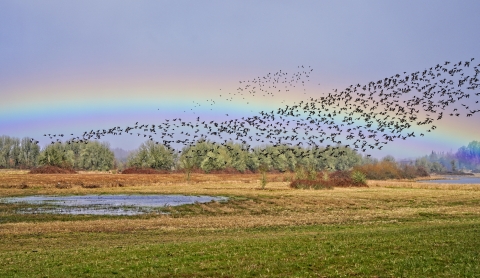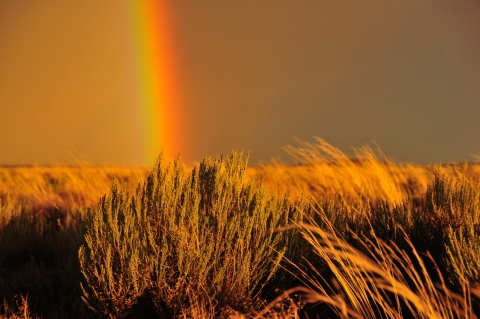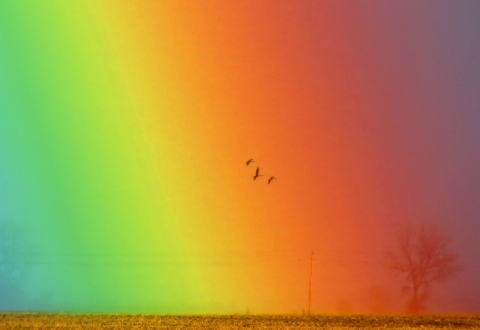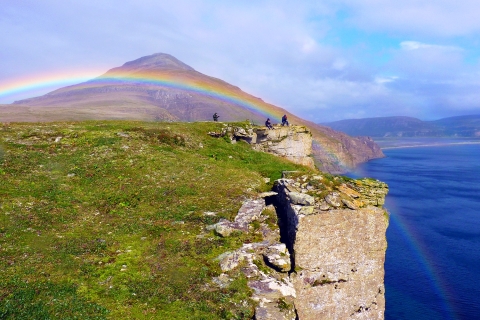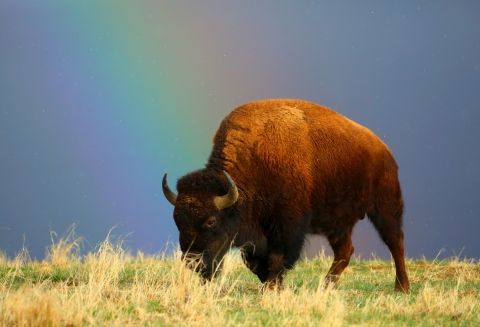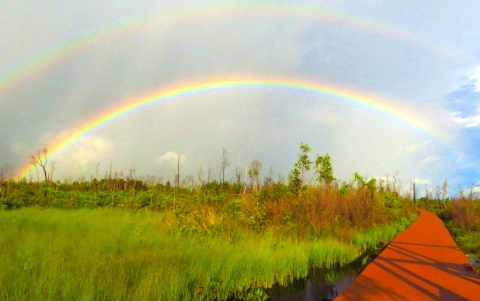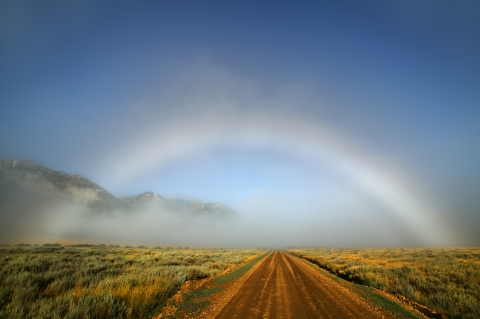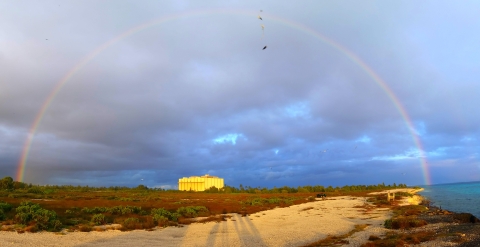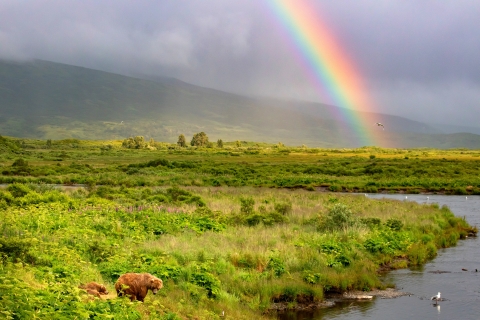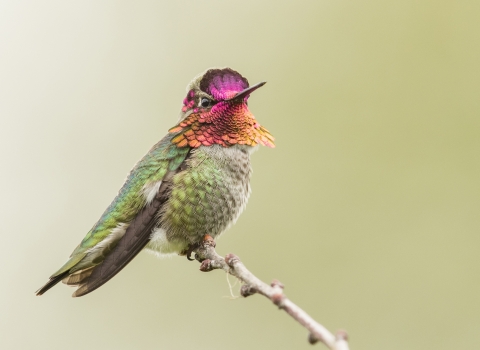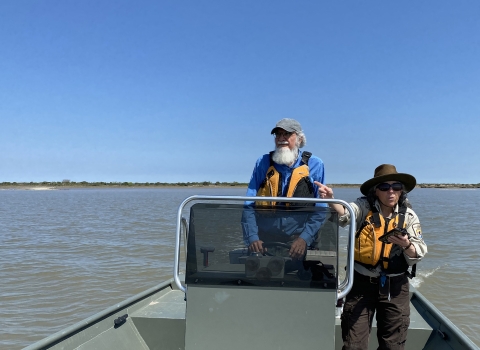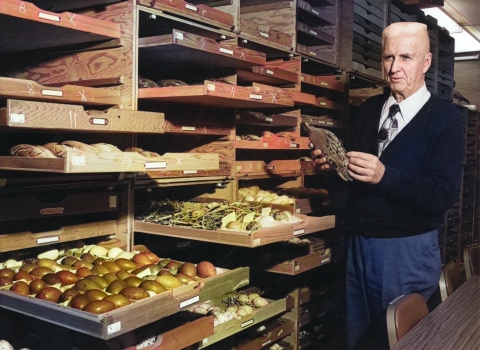Few of nature’s wonders are more eye-catching and breathtaking than rainbows.
“Universally, rainbows seem to be viewed as good fortune or a promise of better things,” says Harold Brooks, a meteorologist with the National Atmospheric and Oceanic Administration (NOAA). “From the rainbow of Noah offering hope to the rainbow leading to a pot of gold, we see hope with rainbows. Since it often has rained just before we see a rainbow, the presence of the bow seems like a brighter start to the future.”
There are few places better to enjoy the beauty of rainbows than in the natural settings of national wildlife refuges.
This story touches on the science and lore of rainbows.
So, just what is a rainbow?
“The traditional rainbow is sunlight spread out into its spectrum of colors and diverted to the eye of the observer by water droplets,” says NOAA’s Weather.gov website. “The ‘bow’ part of the word refers to the fact that the rainbow is a group of nearly circular arcs of color all having a common center. Typically, we only see a portion of the entire circle, leading to the bow shape.”
To understand how a rainbow is formed, Weather.gov continues, “we need to consider the path of a ray of sunlight through a single round raindrop. As light enters the raindrop, it refracts [bends], and some of the light is reflected by the internal, curved, mirror-like surface of the raindrop, and finally is refracted back out the raindrop toward the observer.”
Water and angles are key
To see a rainbow, Weather.gov notes:
- You need to be standing with the sun to your back and the rain in front of you
- The sun needs to be less than 42 degrees above the horizon
- The sun's rays must be hitting the raindrops to create the rainbow
“The most interesting thing to me,” Brooks says, “is how the various angles associated with reflection and refraction work so that the light gets returned back to the viewer spread out so that the colors are visible according to wavelength. If the index of refraction of water was much different than it is, the angle between the incoming and return light might be zero or approaching 90 degrees, so that we couldn’t see it.”
Brooks adds: “Water, in general, and water droplets, in particular, do really neat things.”
ROYGBIV and Isaac Newton
A rainbow typically includes the seven visible colors of the spectrum — red, orange, yellow, green, blue, indigo and violet. You might remember this from science class as ROYGBIV. Isaac Newton was the first scientist to demonstrate that sunlight was composed of seven visible colors. He did so in the 1660s, conducting experiments using a prism.
Everyone sees a rainbow differently
Because a rainbow is an optical spectacle — not a touchable physical entity — what each person see varies. Even if you are standing (or lying or sitting) right next to someone, the colors, the widths of the bands and the shape of the arc may look slightly to different to each of you.
When taking pictures of rainbows, be mindful of the background, the overall composition and even the foreground.
“As rainbows are not solid objects, one of the keys to photographing them is to capture them in front of a background that allows them to stand out as much as possible,” writes Darren Rowse on his Digital Photography School blog. “Ideally, you’ll want to get a background that is uncluttered and, if possible, one that has darker colors (think dark clouds, mountains, etc.). While it’s not always possible to change the background — you might find that you’re able to change the angle that you’re shooting from or to focus just upon part of the rainbow that is in front of a good background.”
The surroundings are what make a rainbow photo exceptional, Rowse writes. “As a result, it’s important to carefully think about how you compose your shot.”
Earth is the only planet with rainbows (as far as we know)
Given that raindrops are the key ingredients of a rainbow, and scientists don’t know — yet — of any other planet that has enough water to produce rain, it stands to reason that rainbows are unique to Earth.
What causes a double rainbow?
“Not all of the energy [of a ray of sunlight] escapes the raindrop after it is reflected once,” explains Weather.gov. “A part of the ray is reflected again, and travels along a different path inside the drop to emerge from the drop at a different angle. The rainbow we normally see is called the primary rainbow and is produced from one internal reflection. The secondary rainbow arises from two internal reflections, and the rays exit the drop the second time at an angle of around 50 degrees, rather than the 42 degrees for the primary rainbow. This effect produces the secondary rainbow, with the colors reversed from the primary rainbow.”
Fogbows, the “cousins” of rainbows
Weather.gov defines a fogbow as “a rainbow that has a white band that appears in fog and is fringed with red on the outside and blue on the inside.”
Fogbows form in much the same way as rainbows do.
“Fog is a cloud of water vapor near to the ground,” meteorologist Matthew Cappucci writes for Science News for Students. “Like raindrops, the fog’s water can refract sunlight into its assorted hues. But hunting a fogbow down can be a challenge. That’s because if you’re near fog, you’re probably inside it. Fog doesn’t tend to have a sharp ‘edge’ that permits sunshine to shine through it (as viewed from the ground).”
We rarely see the entire rainbow
As noted earlier, a rainbow is circle — of which we typically see only a part.
The Farmers’ Almanac explains: “Rainbows appear to be a semi-circle because the horizon interferes. In order to see the full circle of the rainbow, you would have to look down on it with the sun behind you. This scenario is only possible from an airplane. In fact, it is possible to see a rainbow in a complete circle while flying.”
A symbol of hope
In many cultures and traditions, rainbows are spiritual gateways or signs of good fortune. Many people the world over regard them as reassuring.
Harold Brooks, the NOAA meteorologist, tells this story:
A woman whose home had been hit by a tornado was being interviewed on the news one night. She told the interviewer that, as the storm left and she emerged from her tornado shelter, she had seen a rainbow. She spoke in awe of its beauty. And then she said that the moment she saw the rainbow, she knew everything would turn out all right.


